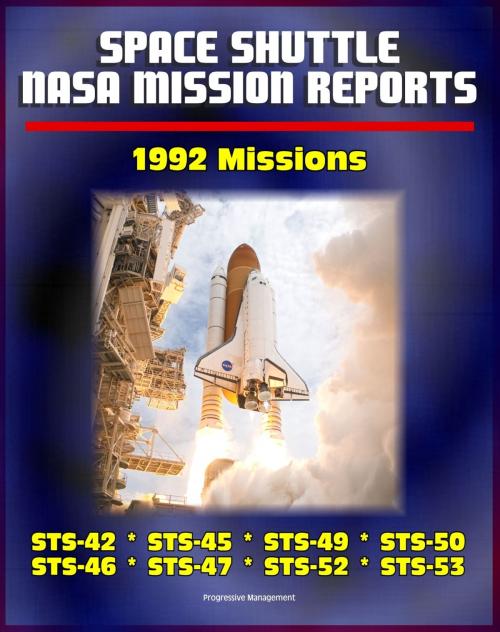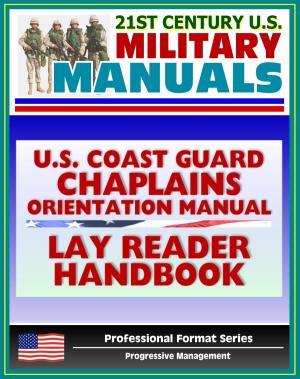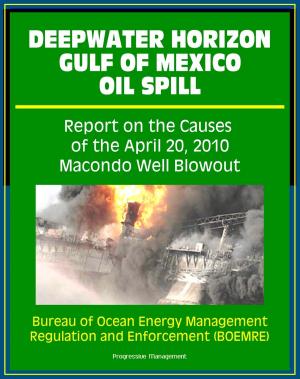Space Shuttle NASA Mission Reports: 1992 Missions, STS-42, STS-45, STS-49, STS-50, STS-46, STS-47, STS-52, STS-53
Nonfiction, Science & Nature, Science, Physics, Astronomy, Other Sciences, History| Author: | Progressive Management | ISBN: | 9781465875648 |
| Publisher: | Progressive Management | Publication: | January 9, 2012 |
| Imprint: | Smashwords Edition | Language: | English |
| Author: | Progressive Management |
| ISBN: | 9781465875648 |
| Publisher: | Progressive Management |
| Publication: | January 9, 2012 |
| Imprint: | Smashwords Edition |
| Language: | English |
These official final program mission reports issued by the NASA Johnson Space Center cover missions in 1992: STS-42, STS-45, STS-49, STS-50, STS-46, STS-47, STS-52, and STS-53. In these thorough reports, with information and specifics not available on NASA website mission descriptions, each orbiter system is reviewed in detail along with technical information on performance and anomalies.
STS-42: The primary objective of the STS-42 mission was to complete the objectives of the first International Microgravity Laboratory (IML-1). The crew for this forty-fifth Space Shuttle flight was Ronald J. Grabe, Col., USAF, Commander; Steven S. Oswald, Pilot; Norman E. Thagard, M.D., Mission Specialist 1 (Payload Commander); William F. Readdy, Mission Specialist 2; David C. Hilmers, Col., USMC, Mission Specialist 3; Roberta L. Bondar, Ph.D, Payload Specialist 1; and Ulf D. Merbold, Ph.D, Payload Specialist 2.
STS-45: The primary objective of this mission was to successfully perform the planned operations of the Atmospheric Laboratory for Applications and Science-1 (ATLAS-1) and the Shuttle Solar Backscatter Ultraviolet Instrument (SSBUV) payloads.
STS-49: The primary objectives of this flight were to perform the operations necessary to re-boost the International Telecommunications Satellite VI (INTELSAT VI) spacecraft and to fulfill the requirements of the Assembly of Station by Extravehicular Activity (EVA) Methods (ASEM) payload.
STS-50: The primary objective of the STS-50 flight was to successfully perform the planned operations of the United States Microgravity Laboratory (USML-1) payload. The secondary objectives of this flight were to perform the operations required by the Investigations into Polymer Membrane Processing (IPMP), and the Shuttle Amateur Radio Experiment II (SAREX-II) payloads.
STS-46: The primary objective of this flight was to successfully deploy the European Retrievable Carrier (EURECA) payload and perform the operations of the Tethered Satellite System-1 (TSS-1) and the Evaluation of Oxygen Interaction with Material Ill/Thermal Energy Management Processes 2A-3 (EOIM-III/TEMP 2A-3).
STS-47: The primary objective of the STS-47 flight was to successfully perform the planned operations of the Spacelab-J (SL-J) payload [containing 43 experiments of which 34 were provided by the Japanese National Space Development Agency (NASDA)]. The secondary objectives of this flight were to perform the operations of the Israeli Space Agency Investigation About Hornets (ISAIAH) payload, the Solid Surface Combustion Experiment (SSCE), the Shuttle Amateur Radio Experiment-II (SAREX-II), and the Get-Away Special (GAS) payloads. The Ultraviolet Plume Instrument (UVPI) was flown as a payload of opportunity.
STS-52: The primary objectives of this flight were to successfully deploy the Laser Geodynamic Satellite (LAGE0S-II) and to perform operations of the United States Microgravity Payload-1 (USMP-1).
STS-53: The primary objective of this flight was to successfully deploy the Department of Defense 1 (DOD-1) payload. The secondary objectives of this flight were to perform the operations required by the Glow Experiment/Cryogenic Heat Pipe Experiment Payload (GCP); the Hand-Held, Earth-Oriented, Real-time, Cooperative, User-Friendly, Location-Targeting and Environmental System (HERCULES); the Space Tissue Loss (STL); the Battlefield Laser Acquisition Sensor Test (BLAST); the Radiation Monitoring Equipment-Ill (RME-III); the Microcapsules in Space-1 (MIS-1); the Visual Function Tester-2 (VFT-2); the Cosmic Radiation Effects and Activation Monitor (CREAM); the Clouds Logic to Optimize Use of Defense Systems-IA (CLOUDS-1A); the Fluids Acquisition and Resupply Experiment (FARE); and the Orbital Debris Radar Calibration Spheres (ODERACS).
These official final program mission reports issued by the NASA Johnson Space Center cover missions in 1992: STS-42, STS-45, STS-49, STS-50, STS-46, STS-47, STS-52, and STS-53. In these thorough reports, with information and specifics not available on NASA website mission descriptions, each orbiter system is reviewed in detail along with technical information on performance and anomalies.
STS-42: The primary objective of the STS-42 mission was to complete the objectives of the first International Microgravity Laboratory (IML-1). The crew for this forty-fifth Space Shuttle flight was Ronald J. Grabe, Col., USAF, Commander; Steven S. Oswald, Pilot; Norman E. Thagard, M.D., Mission Specialist 1 (Payload Commander); William F. Readdy, Mission Specialist 2; David C. Hilmers, Col., USMC, Mission Specialist 3; Roberta L. Bondar, Ph.D, Payload Specialist 1; and Ulf D. Merbold, Ph.D, Payload Specialist 2.
STS-45: The primary objective of this mission was to successfully perform the planned operations of the Atmospheric Laboratory for Applications and Science-1 (ATLAS-1) and the Shuttle Solar Backscatter Ultraviolet Instrument (SSBUV) payloads.
STS-49: The primary objectives of this flight were to perform the operations necessary to re-boost the International Telecommunications Satellite VI (INTELSAT VI) spacecraft and to fulfill the requirements of the Assembly of Station by Extravehicular Activity (EVA) Methods (ASEM) payload.
STS-50: The primary objective of the STS-50 flight was to successfully perform the planned operations of the United States Microgravity Laboratory (USML-1) payload. The secondary objectives of this flight were to perform the operations required by the Investigations into Polymer Membrane Processing (IPMP), and the Shuttle Amateur Radio Experiment II (SAREX-II) payloads.
STS-46: The primary objective of this flight was to successfully deploy the European Retrievable Carrier (EURECA) payload and perform the operations of the Tethered Satellite System-1 (TSS-1) and the Evaluation of Oxygen Interaction with Material Ill/Thermal Energy Management Processes 2A-3 (EOIM-III/TEMP 2A-3).
STS-47: The primary objective of the STS-47 flight was to successfully perform the planned operations of the Spacelab-J (SL-J) payload [containing 43 experiments of which 34 were provided by the Japanese National Space Development Agency (NASDA)]. The secondary objectives of this flight were to perform the operations of the Israeli Space Agency Investigation About Hornets (ISAIAH) payload, the Solid Surface Combustion Experiment (SSCE), the Shuttle Amateur Radio Experiment-II (SAREX-II), and the Get-Away Special (GAS) payloads. The Ultraviolet Plume Instrument (UVPI) was flown as a payload of opportunity.
STS-52: The primary objectives of this flight were to successfully deploy the Laser Geodynamic Satellite (LAGE0S-II) and to perform operations of the United States Microgravity Payload-1 (USMP-1).
STS-53: The primary objective of this flight was to successfully deploy the Department of Defense 1 (DOD-1) payload. The secondary objectives of this flight were to perform the operations required by the Glow Experiment/Cryogenic Heat Pipe Experiment Payload (GCP); the Hand-Held, Earth-Oriented, Real-time, Cooperative, User-Friendly, Location-Targeting and Environmental System (HERCULES); the Space Tissue Loss (STL); the Battlefield Laser Acquisition Sensor Test (BLAST); the Radiation Monitoring Equipment-Ill (RME-III); the Microcapsules in Space-1 (MIS-1); the Visual Function Tester-2 (VFT-2); the Cosmic Radiation Effects and Activation Monitor (CREAM); the Clouds Logic to Optimize Use of Defense Systems-IA (CLOUDS-1A); the Fluids Acquisition and Resupply Experiment (FARE); and the Orbital Debris Radar Calibration Spheres (ODERACS).















